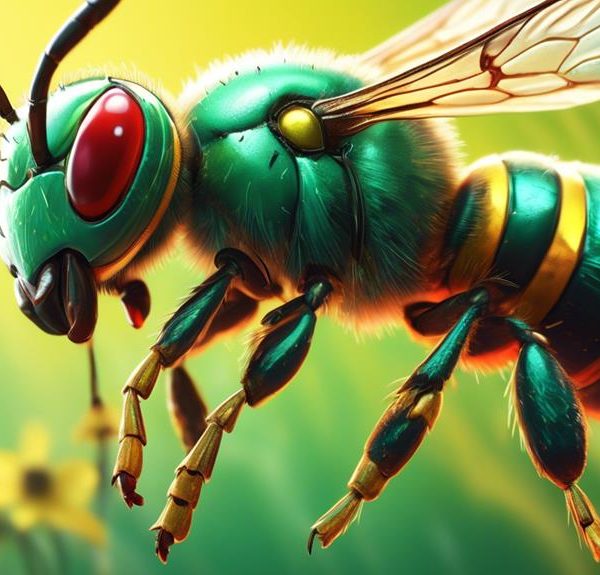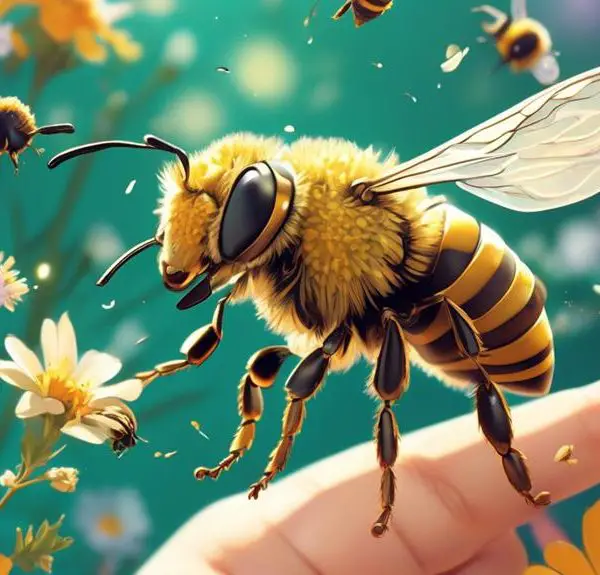Be prepared to uncover the fascinating world of the deceptive bug that mimics the appearance of a sweat bee.
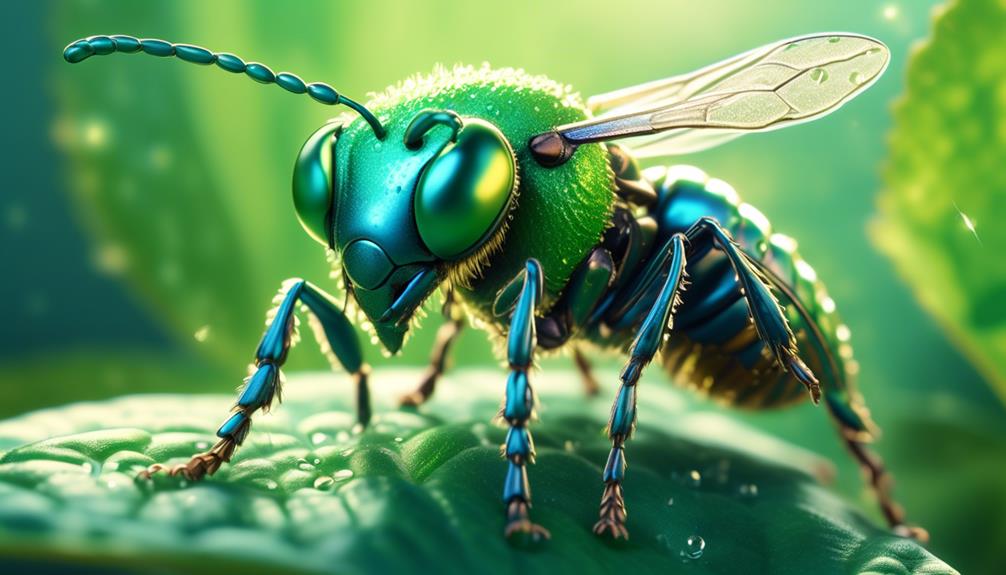
Bug That Looks Like Sweat Bee
You've probably heard the saying, 'All that glitters is not gold,' right? Well, in the world of insects, this couldn't be truer, especially when it comes to the bug that bears a striking resemblance to the sweat bee.
Now, don't jump to conclusions and think you've got a swarm of sweat bees on your hands next time you're gardening. This imposter, with its shiny green body, might fool you at first glance. Yet, if you take a closer look, there are subtle differences that set them apart.
Wondering what those differences might be? Let's delve deeper into the world of this intriguing mimicry.
Key Takeaways
- The bug that looks like a sweat bee is attracted to human sweat for the salt content.
- It has a small size, metallic colors, short antennae, and a slender body with robust hind legs.
- The imposter bug lacks a narrow waistline and has more color variation with stripes or spots.
- It is an expert at camouflaging and imitating bee flight patterns, exhibits defensive tactics, and lives in colonies but acts independently.
Identifying the Sweat Bee Look-alike
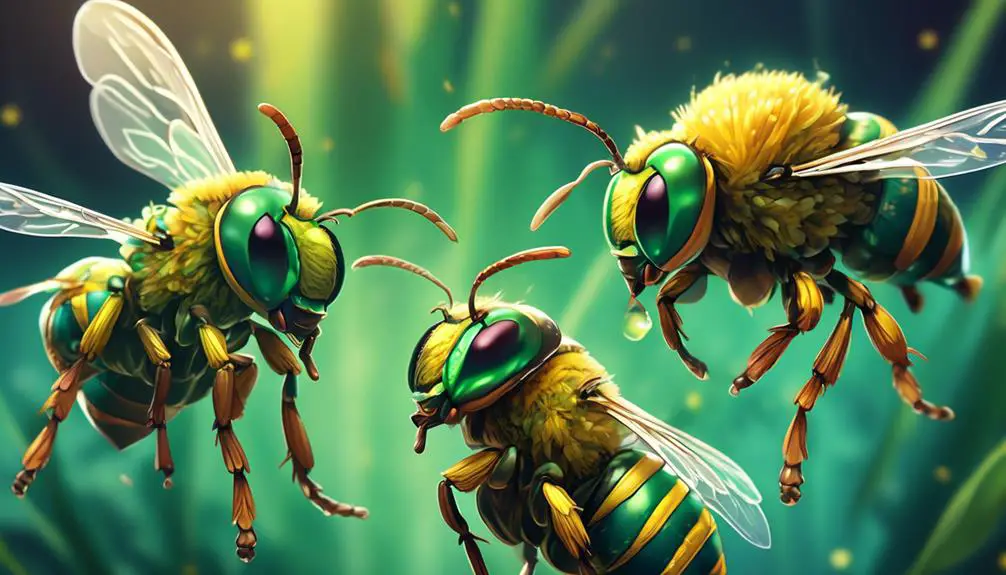
So, how can you identify a sweat bee look-alike? It's not as hard as you might think. First, you've got to grasp the basics. This bug's name comes from its attraction to human sweat, but don't worry – it's not as gross as it sounds. They're just after the salt in your sweat.
Now, onto their appearance. Sweat bees and their look-alikes are small, typically half an inch or less in size. They're often metallic, with colors ranging from black to green or even golden. They've short antennae and a slender body, akin to a wasp's. However, unlike wasps, sweat bees and their look-alikes have robust hind legs.
They're also quite sociable. If you stumble upon a group of tiny, metallic bugs buzzing around flowers or people, there's a good chance you've found sweat bee look-alikes.
And finally, location matters. These bugs are prevalent in North America, so if you're here, you're more likely to encounter them.
Detailed Characteristics of the Imposter
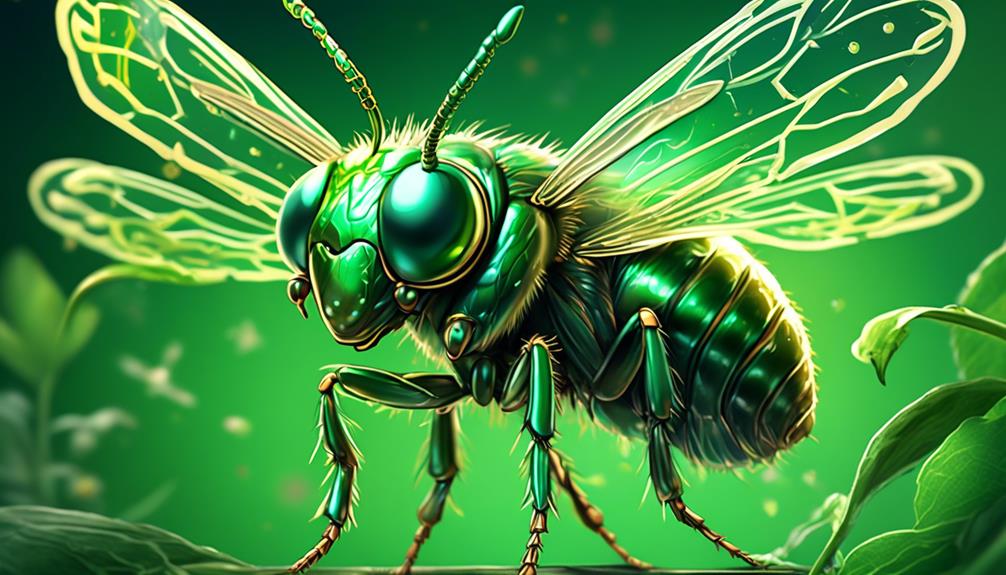
Now that you're familiar with the general appearance and behavior of sweat bee look-alikes, let's get into the nitty-gritty of their distinctive characteristics. These imposters, despite their striking resemblance to sweat bees, have unique traits that set them apart.
- Body Structure
- The imitators often sport a more robust body than the delicate sweat bee. They're usually larger and their bodies aren't as sleek.
- These bugs have a segmented body structure. Unlike the sweat bee, they don't possess a narrow waistline that connects the thorax to the abdomen.
- Color and Pattern
- While sweat bees generally have a metallic sheen on their bodies, the look-alikes often lack this feature.
- These imposters commonly exhibit more color variation. They may have stripes or spots that sweat bees don't.
Unique Behaviors of the Mimic Bug
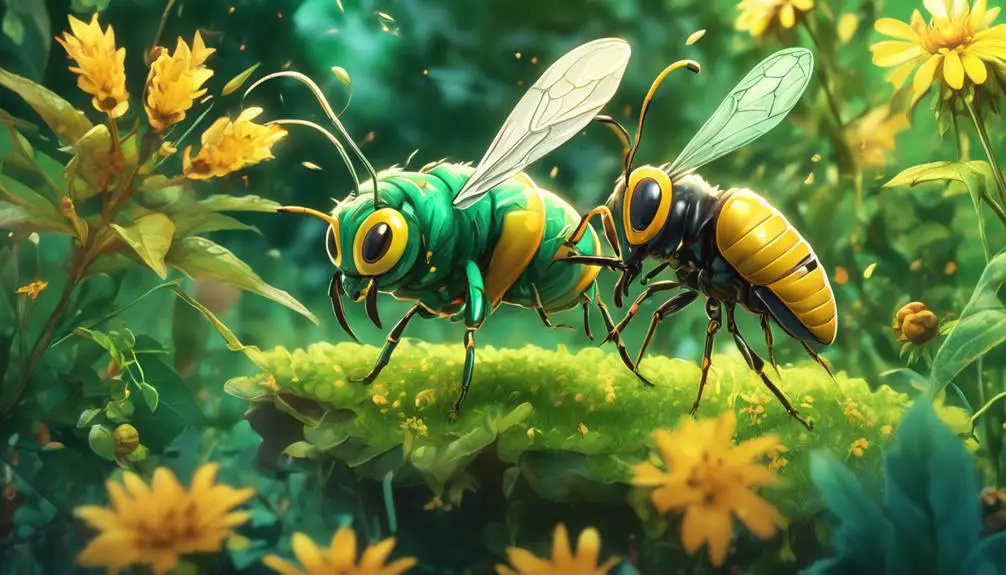
Diving into the mimic bug's behavior, you'll find that these insects have unique habits and actions that clearly distinguish them from sweat bees. They're expert camouflage artists, blending seamlessly into their surroundings. This isn't just about looking like a sweat bee, but acting like one too. During the day, they'll buzz around flowers, imitating the bee's flight patterns.
But their deception doesn't end there. When threatened, they'll lift their abdomen, mimicking the bee's stinger action. This clever act often deters predators, who'd rather avoid a potential sting. However, unlike the sweat bee, mimic bugs can't actually sting, hence the bluff.
Interestingly, mimic bugs have a secret weapon. They can emit a foul-smelling odor to ward off predators, a feature sweat bees lack. This stink is their ultimate defense when all else fails.
Remarkably, mimic bugs aren't solitary creatures. They live in colonies, much like bees. However, they lack the hive mentality. Each bug acts independently, making their colonies seem more like loose gatherings than organized societies.
In essence, mimic bugs are clever con artists of the insect world. Their behavior is a masterclass in survival, demonstrating that sometimes, it's not just about being the fittest, but also the most deceptive.
Exploring the Bug's Natural Habitat
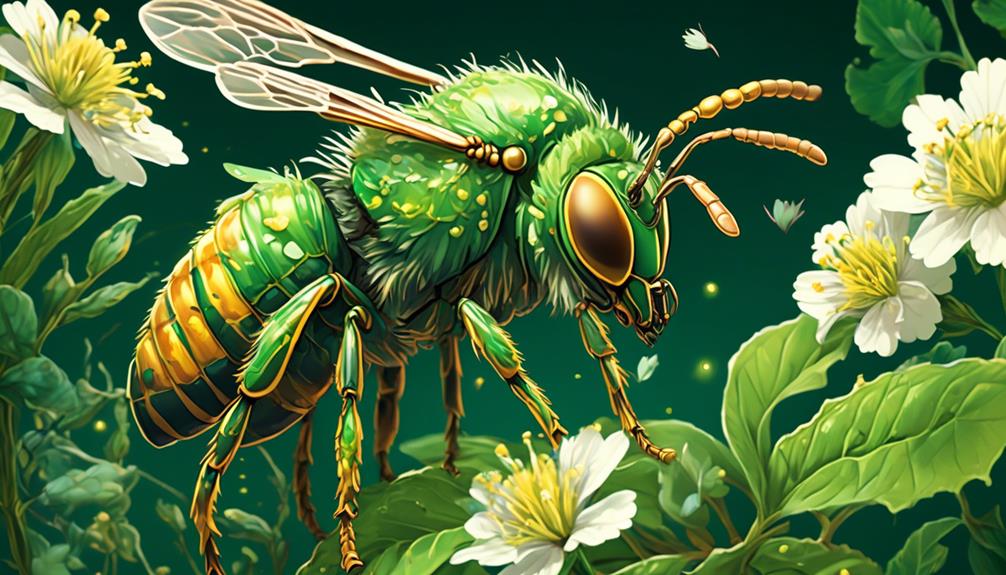
Let's explore the natural habitat of the mimic bug, a fascinating world that plays a key role in its deceptive behaviors. This bug, resembling a sweat bee, can be found in diverse ecosystems, though it's most commonly spotted in grasslands and forests.
The mimic bug's habitat offers a wealth of opportunities for camouflage and deception, crucial for its survival. Here's a brief look at where you're likely to find these intriguing creatures:
- Grasslands
- *Tall grasses*: These areas provide ample hiding spots. The bug's greenish hue blends perfectly with the blades of grass, making it nearly invisible to predators.
- *Flowers*: Mimic bugs often lurk around flowers, tricking pollinators like bees and butterflies.
- Forests
- *Under tree bark*: Here, they can hide from predators and lay their eggs in safety.
- *Leaf litter*: The bugs use the fallen leaves as a cover, both for protection and hunting.
Distinguishing Between the Real and the Fake
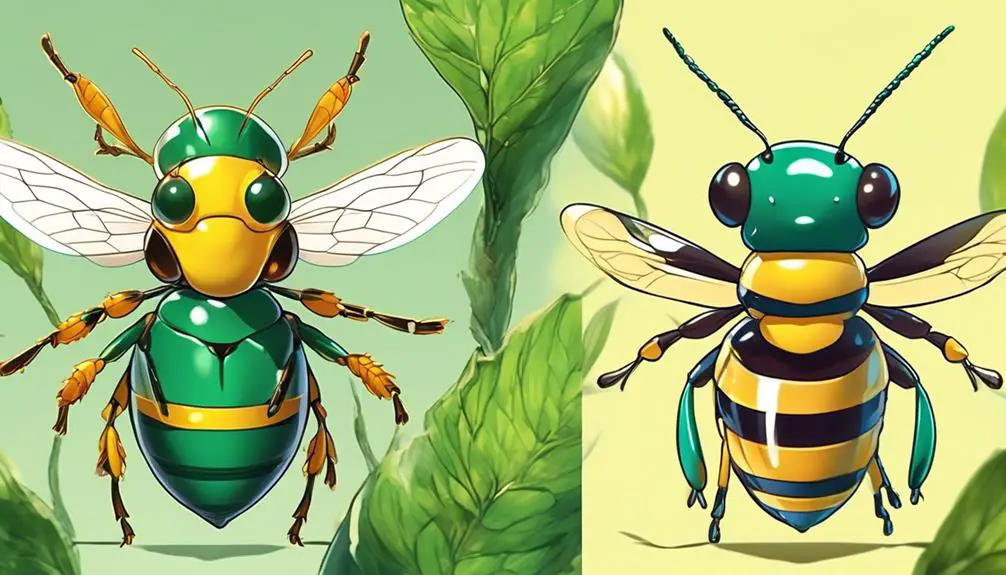
Spotting the difference between the mimic bug and a real sweat bee may seem challenging, but with some careful observation, you can master the art. It's all in the details. Pay close attention to their body structure, colors, and behavior.
Sweat bees are typically smaller than the mimic bug, measuring about half an inch or less. They're often metallic, with colors ranging from black to green or blue. They've got a more rounded abdomen and shorter antennae compared to the mimic bug. You'll also notice sweat bees are more attracted to your sweat, hence the name.
On the other hand, the mimic bug is generally larger and carries a more elongated shape. Its colors are usually duller, leaning more towards black or brown. Unlike the sweat bee, it doesn't have a metallic sheen. It's also less attracted to your sweat, but don't be fooled; it's still drawn to human scent.
Conclusion
So, you've got it all down now. You can spot the sweat bee imposter with its unique characteristics and behaviors. You've explored its natural habitat and learned to tell the real from the fake.
But remember, nature loves to play tricks, so don't be surprised if you find more bugs that look like sweat bees. Keep observing and learning!
After all, that's the real beauty of nature – its endless ability to surprise and astonish us.

